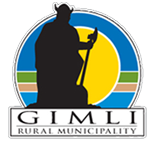Gimli's history dates back to 1875, when the Canadian Government granted land along Lake Winnipeg to Icelandic settlers. The Icelanders quickly set up an almost sovereign nation with their own government system and laws, and the community became known as New Iceland. In 1876, federal surveyors completed their work and divided the republic into townships and three town sites. One of these sites became Gimli. In 1881, when Manitoba's boundary expanded to its present size, New Iceland retained its government system, which remained in effect until 1887, when the present municipal system of government was adopted.
In 1897, the Gimli area was opened up to homesteaders and saw a surge of settlers from Ukraine, Poland, Hungary and Germany. The arrival of the railroad in 1906 made the area accessible to summer tourists arriving from Winnipeg, to enjoy the lake, the beaches, and the recreational activities the community had to offer.
In 1908, the Village of Gimli separated from the Municipality of Gimli, and was officially incorporated. The Town of Gimli was officially incorporated in 1947.
Gimli saw a surge in population during the Second World War with the construction of an air base and the RCAF Service Flying Training School. Closed in 1945, the base opened again in 1950 as a jet fighter training school, and trained thousands of Canadian pilots until 1971 when the base was abandoned. Today, the base has been converted into a productive and prosperous industrial park.
